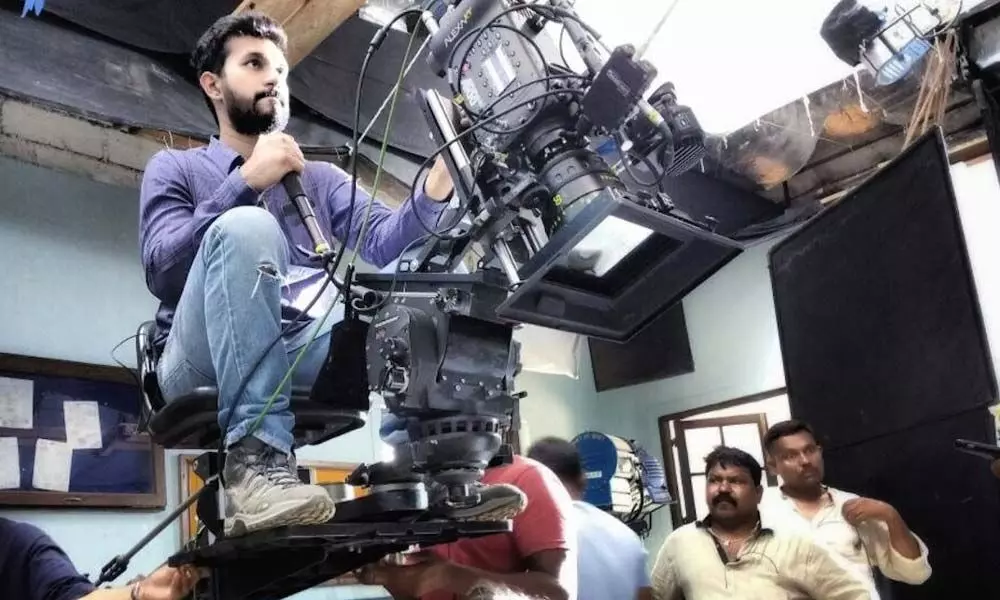Live
- Kumaraswamy displeased after K'taka govt doesn't provide him vehicle during his visit
- Judge says no prison term for Trump in 'hush money' case
- Dense fog disrupts flights in Srinagar; Valley braces for fresh round of heavy snowfall
- Embrace harmony on international mind-body wellness day
- Pupil size plays key role in storing memories in brain
- AI can help identify, manage atopic dermatitis
- Diljit Dosanjh tells PM Modi that India can have bigger festival than Coachella
- Ministers review Budameru flood control measures
- The scene that left Manoj Bajpayee in awe
- Major Preparations Underway for Ram Charan's "Game Changer" Pre-Release Event in Vemagiri
Just In
Cinematography, still a hidden art in India


Cinematography, still a hidden art in India
Aakash Raj, a young cinematographer who already has a Dadasaheb Phalke Award in his kitty, is best known for his work on the feature film Teen Aur Aadha
Cinematographer Aakash Raj who is best known for his work in the film 'Teen aur Aadha' says that cinematography is a 'hidden' art in India even though they play a major role in conceptualising a movie. He also shares his journey of becoming a cinematographer.
Aakash says, " Most of my day is spent on sketching different things, especially Indian mythological characters and looking outside the window into the void. I always knew I had to pursue art as a career and being in films was a perfect combination of art, craft and traveling. I was introduced to the craft of film making right after 10th grade, where I started learning film editing. The editing course gave me a great understanding of how the movie comes together, but I was never satisfied with the editing process as my childhood inclination towards creating images was driving me towards cinematography."
Later when he got familiar with the art and craft of cinematography, he realised that this is the most suitable way to express his thoughts and feelings. Meanwhile, the other side of the art of cinematography also shows the uncertainty of people hardly knowing the person behind the camera.
"Cinematographers in India are very talented, responsible and play a major part in conceptualising, visualising and executing the film. Producers and directors rely on our experience and craft to execute the story effectively and we play a critical role in accomplishing it. However, people would hardly know the person behind the camera," adds Aakash.
With many youngsters getting into the industry making short films, for a short film to reach to its complete success a major responsibility is of the person who is marketing the film.
Explaining about the short films, he adds, "In India, short films are beautiful and with so many layers in them, it is a great format to tell something meaningful and experiment with genres. However, as it is tricky to money back from a short film, people have been neglecting this platform. Most of the time the short films are not circulated well and it ends up nowhere."
Networking is a key element for promoting your work in the international market. "If filmmakers in India can get better with that then they will have a better chance to show their capabilities on international platforms," adds Aakash.
The pandemic gave a much needed break
Knowing that no one was working and there was nothing happening took off the pressure of being ahead of the game. He says, "This was a much needed break for me as I had not taken a break in years. I spent my first few months doing self care like mediation, yoga, weight training and cooking. Then I slowly combined it with watching movies which I missed and updating myself with the work of the filmmakers that I like. I spend a lot of time updating myself with the technological innovations and going through my older camera tests and analysing them."
"A cinematographer is a storyteller. Even though we are focused only on the visual part of it, we are an integral part of telling a story successfully. A cinematographer must understand, analyse and draft a language to tell the story. The technique of cinematography has been changing and will keep changing based on the requirement of the art and not the other way around," concludes Aakash.

© 2024 Hyderabad Media House Limited/The Hans India. All rights reserved. Powered by hocalwire.com






